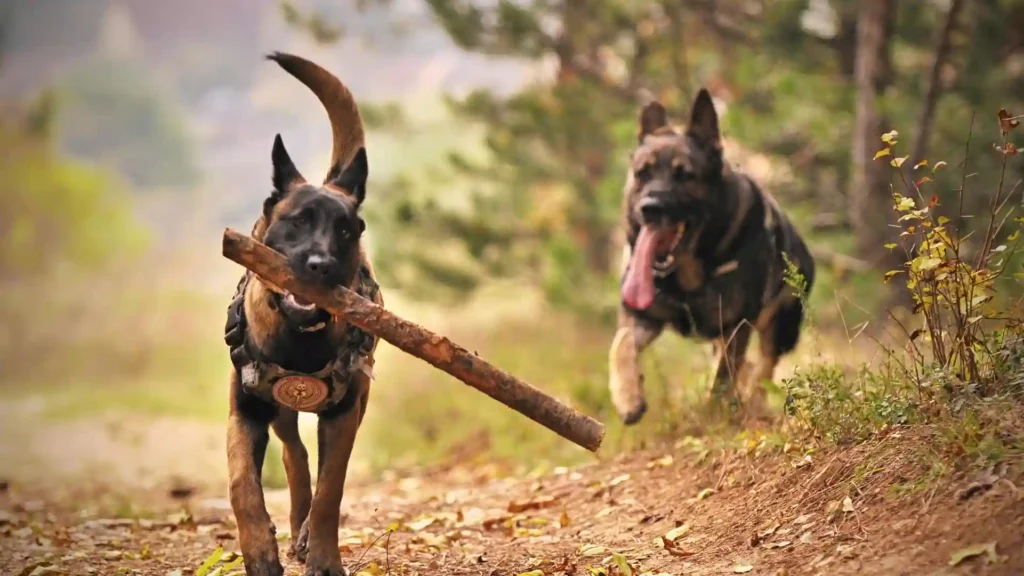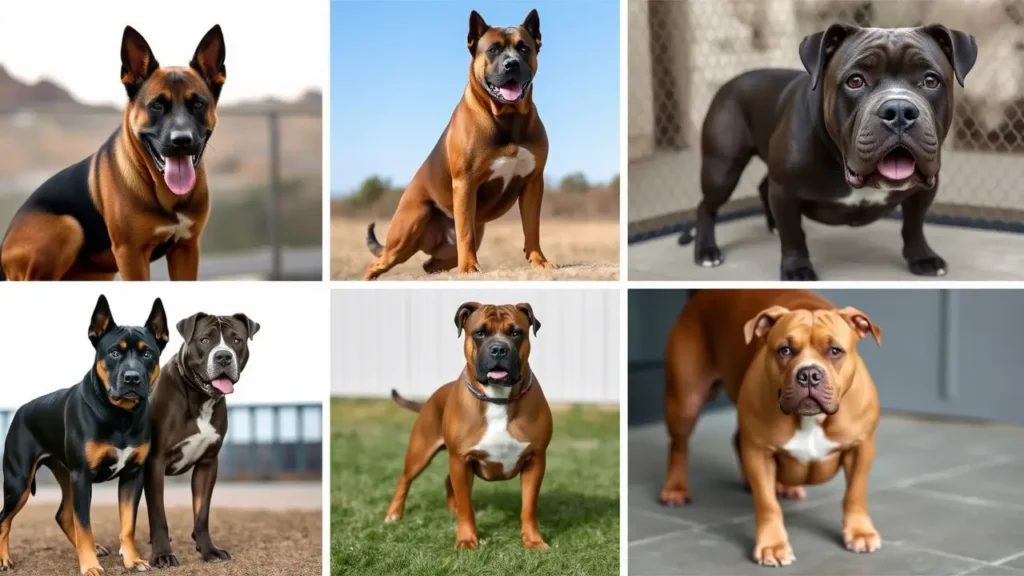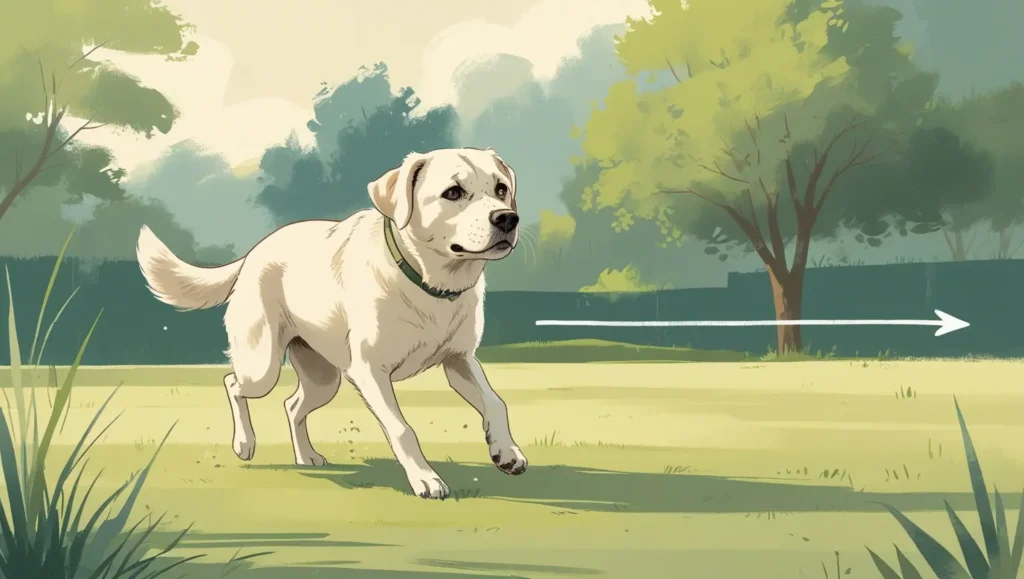Dog needs physical exercise. As a dog parent, one of the most important aspects of caring for your furry companion is ensuring they get enough physical exercise. This practice helps dogs to maintain their health, avoid behavioral issues, and enjoy a high quality of life. However, every dog is different, and exercise routines need to be tailored to their breed, age, size, and fitness level.
Importance of Physical Exercise for Dogs
Exercise is essential for dogs’ physical and mental well-being, and the benefits are boundless. A healthy dog is a happy dog that ultimately brings back joy in your life.
Here’s why:
Physical health | Regular exercise helps dogs maintain a healthy weight, improves cardiovascular health, strengthens muscles and bones, and boosts overall vitality. It also reduces the risk of arthritis, and other chronic health conditions. |
Lower the risk of obesity | It helps to burn calories and maintain a healthy weight, reducing the risk of obesity-related health problems. |
Behavioral benefits | Active dogs are generally calmer, less anxious, and less likely to display behavioral problems. Physical activity releases endorphins, which help reduce stress and improve mood. |
Mental stimulation | Exercise is not only beneficial for the body but also for the mind. Engaging in physical activities helps dogs expend pent-up energy, which reduces the likelihood of destructive behaviors like chewing, barking, or digging. |
Regulate digestive tract | Physical activity helps digestion and prevents constipation or diarrhea. |
Bonding time | Regular exercise provides an excellent opportunity for bonding with your dog. Activities like walking, playing fetch, or running together create a deeper connection and strengthen the human-animal bond. |
Amount of Exercise Dog needed
The amount of exercise your dog requires depends on various factors, including their breed, age, size, and health. By tailoring your dog’s workout routine to their developmental stage, you can support them in maintaining a healthy weight, strong muscles, and an even temperament!
Your first step is to talk to your veterinarian to make sure your exercise plan is appropriate for your dog’s current fitness level. Below are general guidelines to help you determine how much exercise your dog needs:
Puppies | Generally, puppies have a lot of energy but need shorter bursts of exercise to avoid overexertion. About 5 minutes of exercise (up to twice a day) is a good rule of thumb. For example, a 4-month-old puppy should get around 20 minutes of exercise twice a day. Dr. Jennifer Coates, DVM, “Puppies, particularly of high-energy breeds, require a lot of physical stimulation to help them develop healthy muscles and joints.” Take puppies for regular short walks and play sessions. Activities like zoomies and getting to know other dogs at the park are often enough activity to get a pup’s body moving. Avoid strenuous or high-impact exercises that could stress their developing bodies. |
Adult dogs | Most adult dogs require at least 30 minutes to 2 hours of exercise each day. Active breeds like Border Collies, Labrador Retrievers, and Australian Shepherds may need more exercise, such as hikes lasting several hours, or agility training, while smaller or less active breeds, like Bulldogs or Chihuahuas, may be fine with 30 minutes of moderate activity. |
Senior dogs | Older dogs still need exercise, but the intensity and duration should be adjusted to account for their age and any health issues. Dr. Barbara Butler, DVM, Certified Canine Rehabilitation Therapist (CCRT) and certified veterinary acupuncturist says, “It’s important for owners to do some exercises at home that are age- and skill-appropriate for their dog. Doing so can have a large impact on a senior dog’s quality of life physically and in terms of mental sharpness.” Senior dogs have lower energy levels, weaker joints and often different ailments that will keep them from doing all the things they could once do when they were younger. Shorter, more frequent walks are ideal for seniors. Dr. Coates recommends “gentle walks and low-impact activities to prevent stiffness and keep their metabolism active.” |
Types of Exercise for Dogs
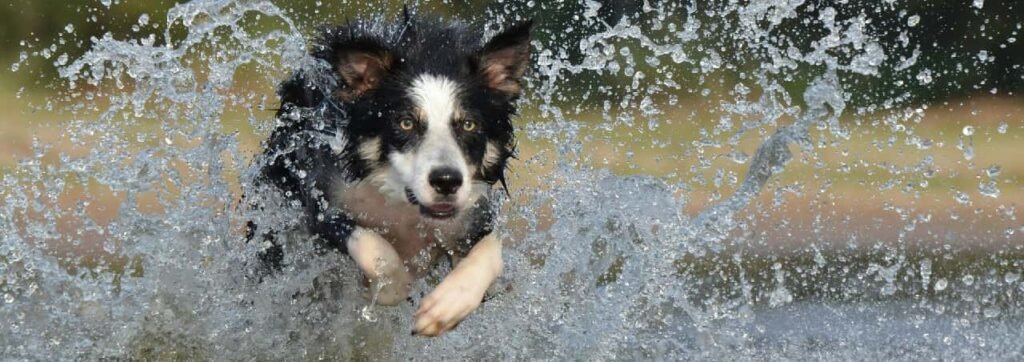
Walking
Walking is the most basic form of exercise, but it’s incredibly important for your dog’s physical and mental well-being. Regular walks provide a steady, low-impact form of exercise that improves cardiovascular health and provides mental stimulation through the environment.
According to Dr. Nell Ostermeier, a veterinarian and founder of People + Pet Integrative Therapies, how often you should leash up your pup and head out the door can vary depending on the dog—but you can start with a baseline like this: two 15-30 minute walks for adult dogs and five minutes of walking per month of age, at least twice a day for puppies.
Aim for at least one 30-minute walk per day, or two shorter walks. Vary the route to keep your dog mentally engaged and expose them to different sights and smells. One study suggests that Americans walk their dog nine times a week, and each walk lasts approximately 34 minutes, while the number of weekly dog walks drop to six in UK.
According to Dr. Ostermeier, the amount of time spent on walks depend on many factors, like-
- Energy level
- Breed
- Size
- Age
- Medical history
For example, senior dogs with arthritis can’t walk more than five minutes a day. But for other dogs, or if your dogs have behavioral problems like shredding furniture, you should walk your dog longer than the average time.
Walking is suitable for breeds like Great Danes, Basset Hounds, Cocker Spaniels and Bulldogs.
Running and Jogging
Running or jogging is an excellent way to provide high-intensity exercise for dogs with a lot of energy. This activity works best for athletic dogs, such as Retrievers, Border Collies, Shepherds, and Terriers. Greyhounds prefer short interval training sprints.
Start with short jogs and gradually increase the distance and pace. Take it easy at first and build up slowly to avoid an injury. Alternate between walking and running, and run for short distances initially.
If your dog is unfit, run at their pace, give them plenty of breaks and allow them to stop when they want. It’s also important to remember that dogs don’t sweat through their skin. They pant as a means to bring their body temperature down. Pushing them too hard can lead to hyperventilation and breathing difficulties, so let your dog stop when they want, and don’t try to push them further.
Running is not recommended for over-weight dogs, dogs with arthritis or puppies. Consult your vet before starting a running regimen.
Fetch and Retrieval Games
Playing fetch is a classic dog activity that offers both physical and mental exercise. Dogs love the challenge of retrieving an object, and this game can help improve coordination, speed, and agility. These activities are suitable for breeds like Labradors, Goldens and Chesapeake Bay Retrievers. Fetch is a great way to get your dog exercise and to burn excess energy. It’s a handy way to tucker them out, so they get the sleep they need. Plus, it will keep them mentally stimulated and strengthen your bond together.
Use a tennis ball, frisbee, or any other safe, durable toy. Aim for 15 to 30 minutes of fetch a few times a week, depending on your dog’s fitness level. Training your dog to fetch and bring the toy back takes practice! It may also require you to act a bit crazy about the fetch toy to increase your dog’s excitement.
Tug-of-War
Tug-of-war is a great game to burn off energy and build strength in your dog’s muscles. Tug can promote impulse control, build confidence, and strengthen the bond between dogs and their owners. It’s an activity that taps into natural drives, making it a motivational, reinforcing, and high-value training tool. It can be played indoors or outdoors, making it a versatile option for rainy days or when you’re short on time.
Tug helps to build confidence. Dr. Erica C. Boling. a Certified Canine Fitness Trainer (CCFT) and owner of Northeast K9 Conditioning, says she has used tug games with both her Belgian Malinois from an early age.
She says, “One of the things I did with my dog when he was younger, I would just put him in the car and take him to different environments, and I didn’t focus on obedience. Instead, it was like ‘let’s just go and play,’ so he can see it is fun and, also, he learns to engage and focus on me versus being all distracted in the environment. When he would get stressed and anxious, you could feel him releasing it during a game of tug.”
Use a rope toy or a sturdy tug toy, and always ensure that the game is played safely. Make sure to teach your dog proper “drop it” or “release” commands to prevent possessiveness.
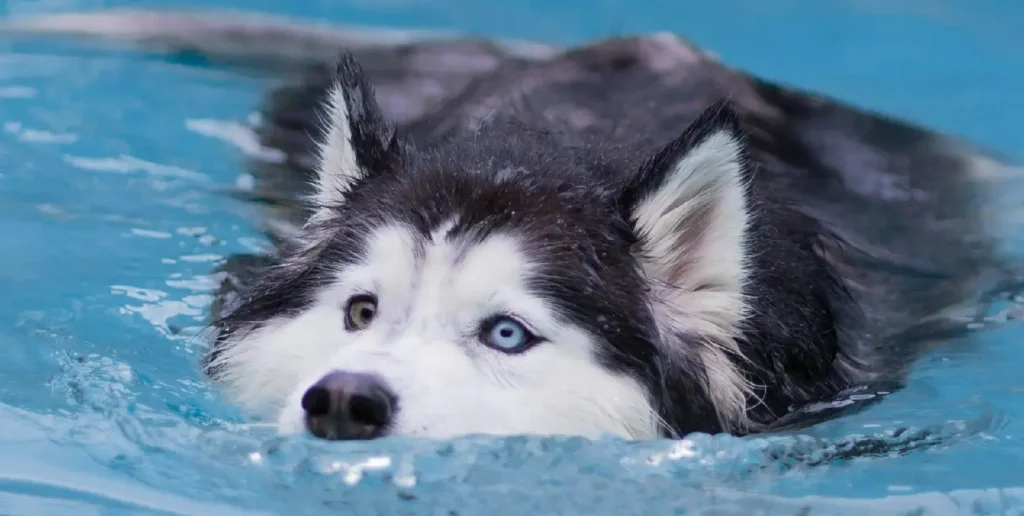
Swimming
Swimming is an excellent low-impact exercise for dogs with joint issues or senior dogs. It’s easy on the joints while providing a full-body workout. Many dogs, especially retrievers and spaniels, love water, and swimming can be a fun way for them to burn energy.
As obesity is a significant issue in pets, leading to numerous health complications, regular swimming can help keep your dog in shape. The sport also boosts cardiovascular health, improving your pet’s endurance and overall fitness.
Swimming brings a lot of benefit for dogs, like –
Physical benefits –
- Joint-friendly
- Healthy exercise for overweight dogs
- Faster recovery for injuries
- Improves cardiovascular fitness
Mental benefits –
- Relieves Stress
- Provides Stimulation
- Improves Sleep
Always supervise your dog when they are swimming, especially in open bodies of water, to ensure their safety. Introduce them to swimming gradually if they are not familiar with water.
Agility Training
Dog agility training is where you sharpen your dog’s abilities by teaching them to navigate around an obstacle course. With its mix of obstacles such as jumps, teeter-totters, tunnels and poles, agility hones your dog’s physical skills, speed, competitiveness and mental acuity. This involves teaching your dog to navigate an obstacle course, improving coordination and focus. It’s especially beneficial for energetic and intelligent breeds.
These basic skills can help build your dog’s confidence, decrease their anxiety, increase their trust, and introduce them to new experiences. You can foster greater attention by teaching your dog to make eye contact with you.
Agility training is beneficial for your dogs for some reasons. These include –
- Having a hell of a lot of fun
- Solving behavior problems
- Improving off-leash reliability
- Exercising your dog in a way that will tire his body and mind
- Building a strong bond between you and your dog
- Gaining a really cool skill to show off to the uninitiated masses
- Becoming better at all aspects of training and communicating with your dog
Start with basic obstacles like tunnels, jumps, and weave poles. You can attend an agility class or create your own DIY agility course at home using everyday items.
Interactive Play
Interactive toys like treat-dispensing puzzles, flirt poles, and laser pointers offer mental and physical stimulation. These activities are great for dogs that need to expend energy without requiring a lot of space. Interactive play – with the right interactive toys – can be a highly effective motivator and a reward that tops even the tastiest of treats.
To combat their distress, an interactive dog toy can help keep your dog mentally occupied and engaged. The right toys can distract them from feelings of loneliness and anxiety.
Rotate interactive toys to keep your dog engaged. It’s a great way to stimulate their minds and bodies when you’re busy or the weather is bad.
How to Create an Effective Exercise Routine for Dogs
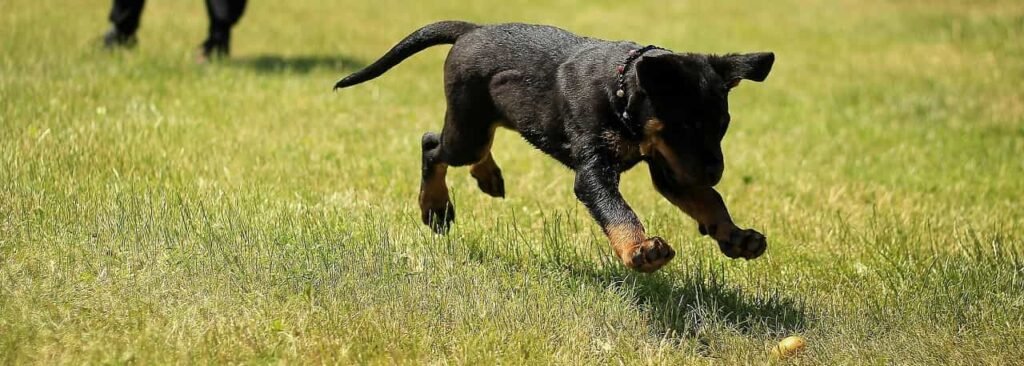
Creating an exercise routine tailored to your dog’s needs is key to keeping them fit and healthy. Here’s how to develop a plan:
Assess your dog’s needs | Consider their breed, age, and fitness level. High-energy breeds will require more rigorous exercise than low-energy ones. |
Mix it up | Incorporate a variety of activities to keep your dog engaged and avoid monotony. A combination of walks, playtime, and mental exercises will keep your dog from getting bored. |
Set a schedule | Consistency is crucial. Set specific times for exercise each day, so your dog can look forward to it and maintain a healthy routine. |
Monitor their health | Keep an eye on your dog’s energy levels and physical condition. If you notice signs of fatigue or discomfort, adjust their exercise routine accordingly. |
Use positive reinforcement | Keep an eye on your dog’s energy levels and physical condition. If you notice signs of fatigue or discomfort, adjust their exercise routine accordingly. |
Stay safe | Always exercise your dog in safe, dog-friendly areas. Avoid extremely hot or cold weather, and bring water to keep them hydrated during outdoor activities. |
Common Mistakes to Avoid
Over-exercising young puppies: While puppies have plenty of energy, excessive physical exertion can harm developing joints and bones. Overexertion can lead to exhaustion, dehydration, muscle strains, or even heatstroke.
Ignoring weather conditions: Extreme heat or cold can be dangerous for dogs. Avoid exercise during the hottest part of the day, and be mindful of icy conditions in winter – that typically means temperatures above 90º or below freezing. Avoid exercise when there is smoke and storms.
Neglecting Mental Stimulation: Like humans, dogs need rest days. Over-exercising can lead to injuries and burnout. Neglecting their mental well-being can lead to boredom, restlessness, and destructive behavior.
Consult a Veterinarian
Before starting a new exercise regimen, it’s always a good idea to check with your veterinarian, especially if your dog has any preexisting health conditions or is elderly. Your vet can recommend the most suitable activities and help you tailor an exercise plan based on your dog’s health needs.
Conclusion
Physical exercise is a necessity for every dog. It provides a wealth of benefits. By understanding your dog’s unique needs and following expert advice on exercise, you can ensure that your dog remains happy, healthy, and well-adjusted for years to come.
If you’re unsure where to start, begin with daily walks, and gradually introduce other activities as your dog becomes more fit. The key is consistency, variety, and making exercise fun for both you and your dog.

